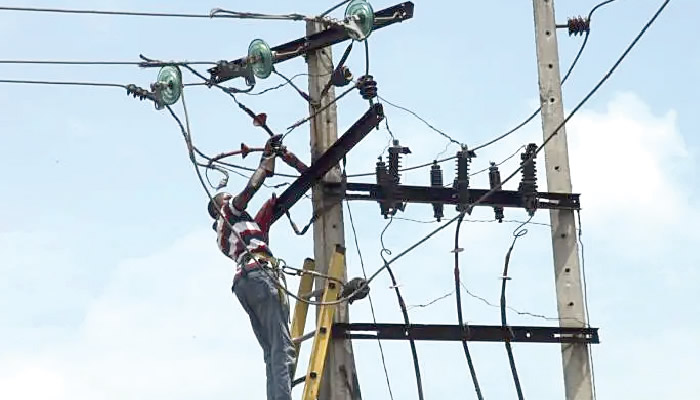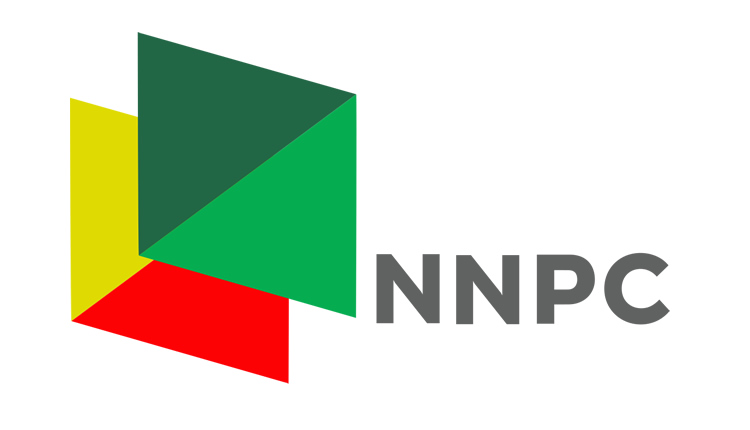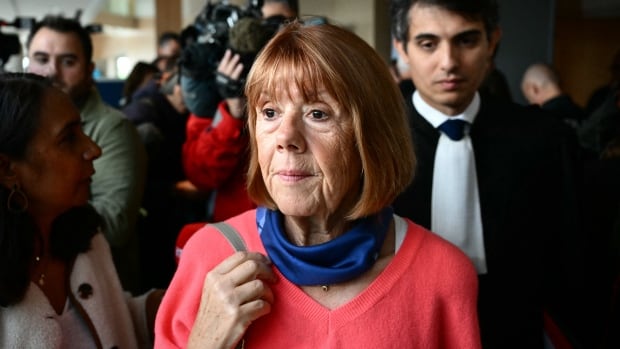The Gaza Health Ministry on Monday declared the Gaza Strip an “epidemic area” for polio.
It comes a week after UNICEF and the World Health Organization (WHO) found Type 2 poliovirus in six samples of wastewater in Khan Younis and Deir al-Balah.
In a post on WhatsApp, the Health Ministry said this was caused by the “miserable conditions” that the people of Gaza are living in.
The WHO said in a statement to CBC that it “considers there to be a high risk of spread of this strain [of poliovirus] within Gaza and internationally,” especially because of the war’s impact on public health services in the territory.
“Having vaccine-derived polio virus in the sewage very likely means that it’s out there somewhere in people,” said the WHO’s Christian Lindmeier in a UN press briefing on Tuesday.
No cases of the polio disease have yet been identified in Gaza. But the announcement is another sign of a continued public health emergency, as the ongoing Israel-Hamas war has destroyed much of the strip’s health infrastructure and sewage systems, and waning vaccination rates contribute to the re-emergence of viruses.
Gazans seek to vaccinate their children
At a clinic in the town of Al-Zawaida, the screeches of crying babies echo through the hallways. Like a well-oiled machine, parents with infants and children line up at the doctor’s desk and wait for their paperwork to be finished before their kids can be given their immunizations.
One little boy is weighed and then carried to the next table, where a doctor prepares him for the shot. He cries as the needle punctures his arm; his mom tries to comfort him. His screams fill the room as he receives another vaccine, this time in his thigh. But at last, it’s finally over.
“We have some hope now,” Omar Al-Zawaidi told CBC freelance videographer Mohamed El Saife while waiting to get his other son vaccinated. “Now my son, when anything happens to him, I [can] say, ‘At least he is vaccinated.'”

The poliovirus strain found in Gaza is vaccine-derived, originating from the oral polio vaccine, which is no longer used in Canada or the U.S. It contains a weakened live form of the virus, which can still spread from child to child in areas with lower vaccination rates.
“So this is a huge risk that can affect children and adults,” said Dr. Lama Al-Afash, who works at the clinic in Al-Zawaida.
Last week, in response to the detection of the virus in Gaza, Israel announced a voluntary polio vaccine booster campaign for its troops in the strip.
On Friday, the WHO announced that it would send over a million polio vaccines to Gaza to be administered in the coming weeks.
Omar Al-Zawaidi, a father of two, went to the hospital in hopes of getting his children vaccinated against polio, a highly infectious virus that is spread through the fecal-oral route. A doctor working in Gaza, meanwhile, warns that actually detecting the virus will prove challenging as cases can be asymptomatic.
The Israel-Hamas war began on Oct. 7, after a Hamas-led attack on southern Israel left 1,200 dead and over 200 hostages taken into Gaza. Israel’s responding ground and air offensive on the strip has left 39,000 dead.
Sewers destroyed
In Khan Younis in southern Gaza, among the bombed-out buildings and piles of rubble, a stream of wastewater presents itself. People go about their days, walking around the puddles of sewage or crossing through the deeper ones by hopping on cinder blocks that have been placed in a row. The brown water continues to flow slowly and pools in holes in the ground created by the bombing.
“All the sewers are destroyed in the city,” Shadi Abdel Wahab, 60, tells CBC’s El Saife. “All of it is flooded.”
Poliovirus can spread through stool, or contaminated sewage water. This is especially grave for Gaza, where in addition to its health-care facilities, the majority of its sanitation infrastructure has been completely decimated by the war.
In its statement, the Health Ministry said Gazans have been deprived of potable water, and garbage is piling up.
Dr. Al-Afash says the high level of contamination is her main concern.
“There’s a lack of cleanliness and a lack of care … because of the war,” she said. “These are the shortfalls that we suffer from and we worry that there might be contagion.”
Danny Glenwright, CEO of Save the Children Canada, says a ceasefire is essential to stave off a potential epidemic of communicable diseases in the Gaza Strip.
“After nearly 300 days of bombardment and humanitarian catastrophe, this is another sign that things are only getting worse,” he told CBC News.
“And that’s immoral, it’s unconscionable.”
Over 80 per cent of the Gaza Strip is under an evacuation order or is designated as a no-go zone, according to the United Nations. Glenwright says that leaves “1.9 million internally displaced people forced into just 17 per cent” of the strip.
“We’re now doing enhanced reporting on symptoms and established a focal point at our clinic to do monitoring for polio,” he said. “We haven’t seen any confirmed cases ourselves, but we’re continuing to screen.”
“So we’re sort of readying for what we see coming.”
‘Everyone is at risk’
Poliovirus isn’t the only concern that people in Gaza are contending with — the UN reported last week an increase in Hepatitis A, dysentery and gastroenteritis. And many people are also noting the spread of a highly contagious skin disease in the strip.
Omar Al-Zawaidi likens a potential polio outbreak to the war ravaging Gaza for nearly 10 months now.
“In this war, the aggression affects everyone — children and women,” he said. “It doesn’t miss anyone.
“Young and old, everyone is at risk.”







